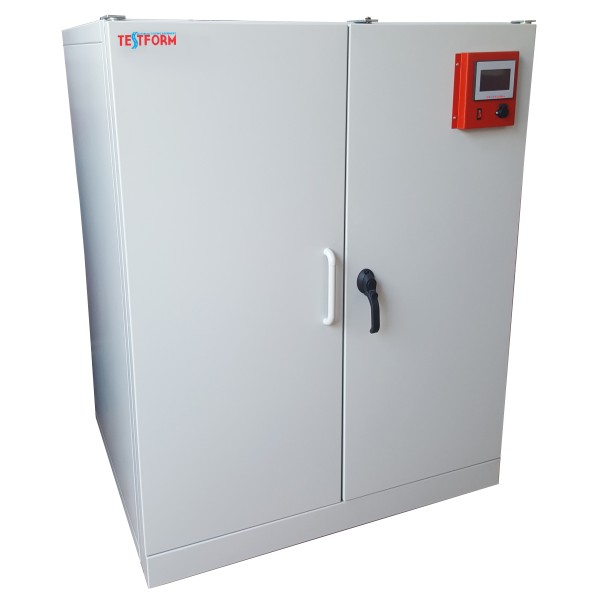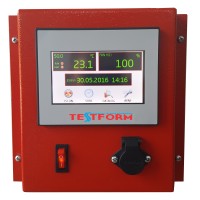Water absorption
- Product Code: EN_997.2
Standartd: EN 997
Assessment method according to clauses of this standard : 5.7.3
When tested in accordance with 5.7.3, the arithmetic average for water absorption of glazed ceramic WC pans shall not exceed 0,5 % by mass.
5.7.3 Determination of water absorption
5.7.3.1 Test material and apparatus
— a balance accurate to 0,05 g;
— an oven controlled at a test temperature of (110 ± 5) °C;
— a desiccator with fresh prepared silica gel;
— a chamois leather;
— a heated bath with temperature control;
— demineralised water;
— a pair of fine tweezers;
— a fine brush.
5.7.3.2 Procedure
— Break three samples glazed on one face from a WC pan. The unglazed surface area of the samples shall be approximately 30 cm2 and the thickness including the glaze shall be approximately 12 mm.
— Dry the samples at a temperature of 110 °C for (180 ± 5) min.
— Allow the samples to cool in a desiccator.
— Weigh each sample to an accuracy of 0,05 g; the mass is //?q.
— Using the fine tweezers place the samples in the bath and fill with demineralised water. Ensure they do not touch the sides or the bottom of the bath.
— Heat the water to boiling point for (120 ±5) min. Afterwards stop the heating process and leave the samples immersed for a further (20 ± 1) h.
— Using the fine tweezers take the samples immediately from the water and dry them with slightly damp chamois leather.
Any cavities or holes shall be dried using a fine brush. Weigh each sample immediately; this mass is m*j.
The coefficient of water absorption in percentage shall be calculated for each sample using Equation (1).
where
WA is the coefficient of water absorption, in %;
inQ is the mass of the dry sample, in g;
m-1 is the mass of the sample after immersion in water, in g.
Calculate the arithmetic average of the water absorption coefficient for the three samples. Report each individual value and the calculated arithmetic average.


